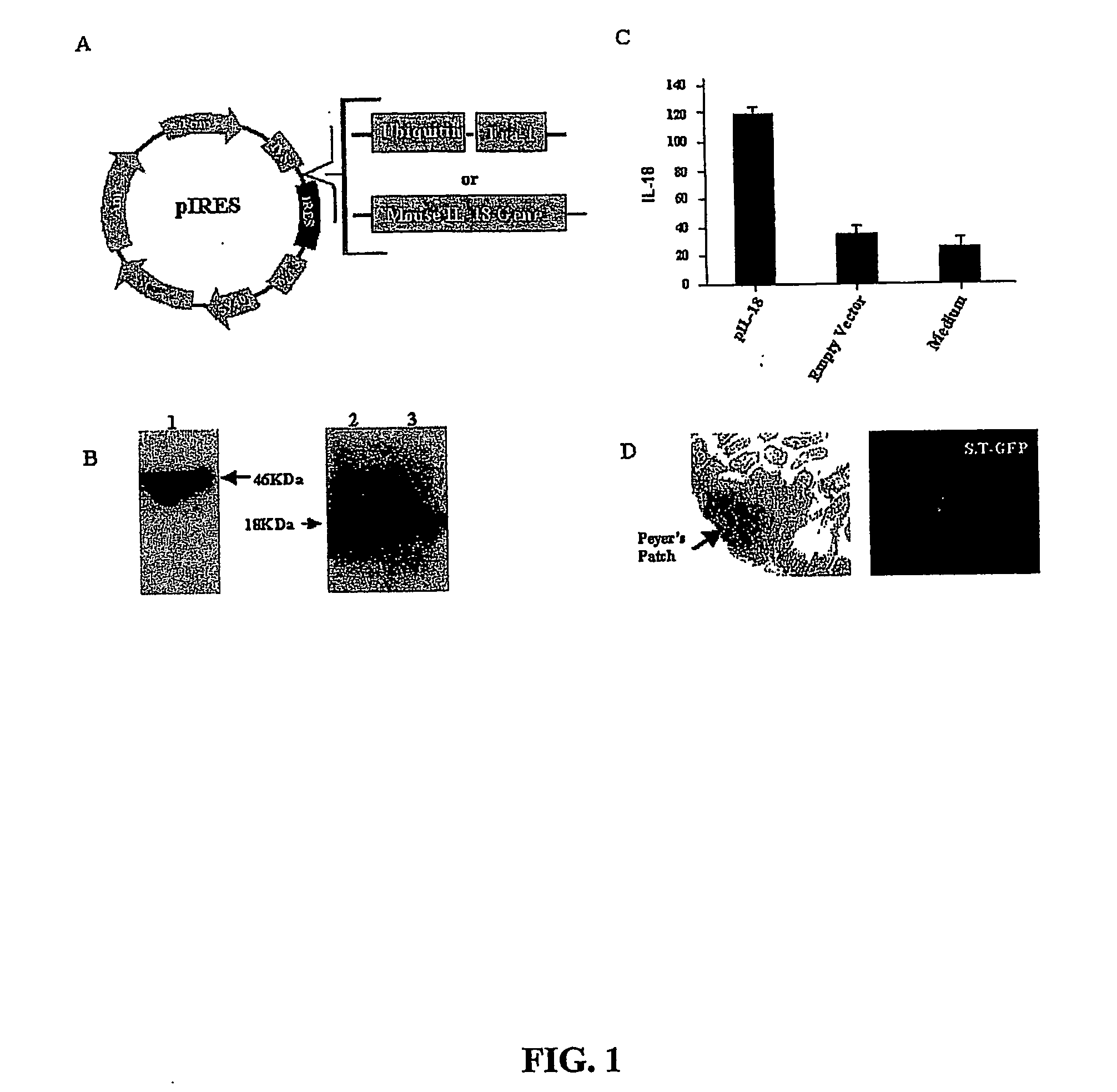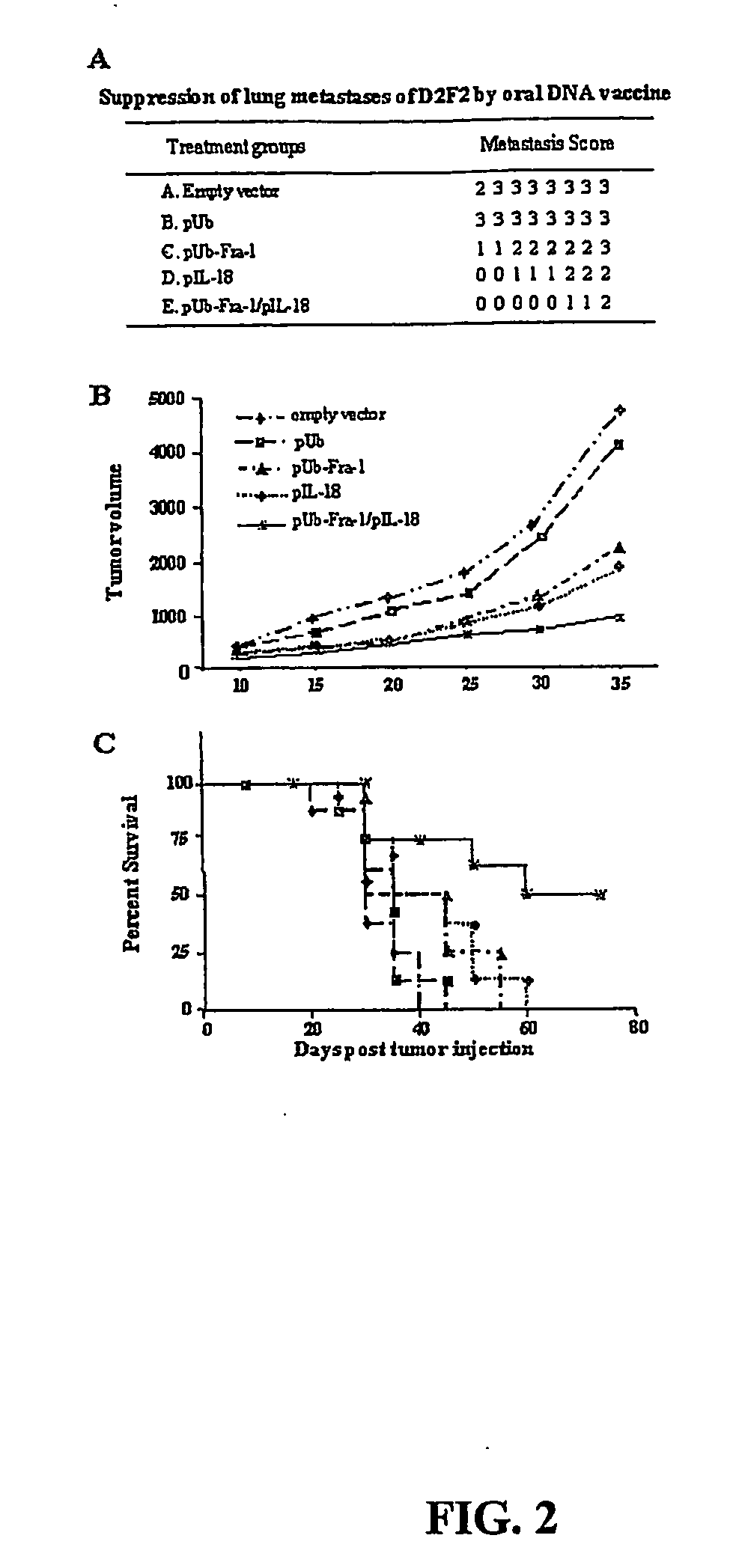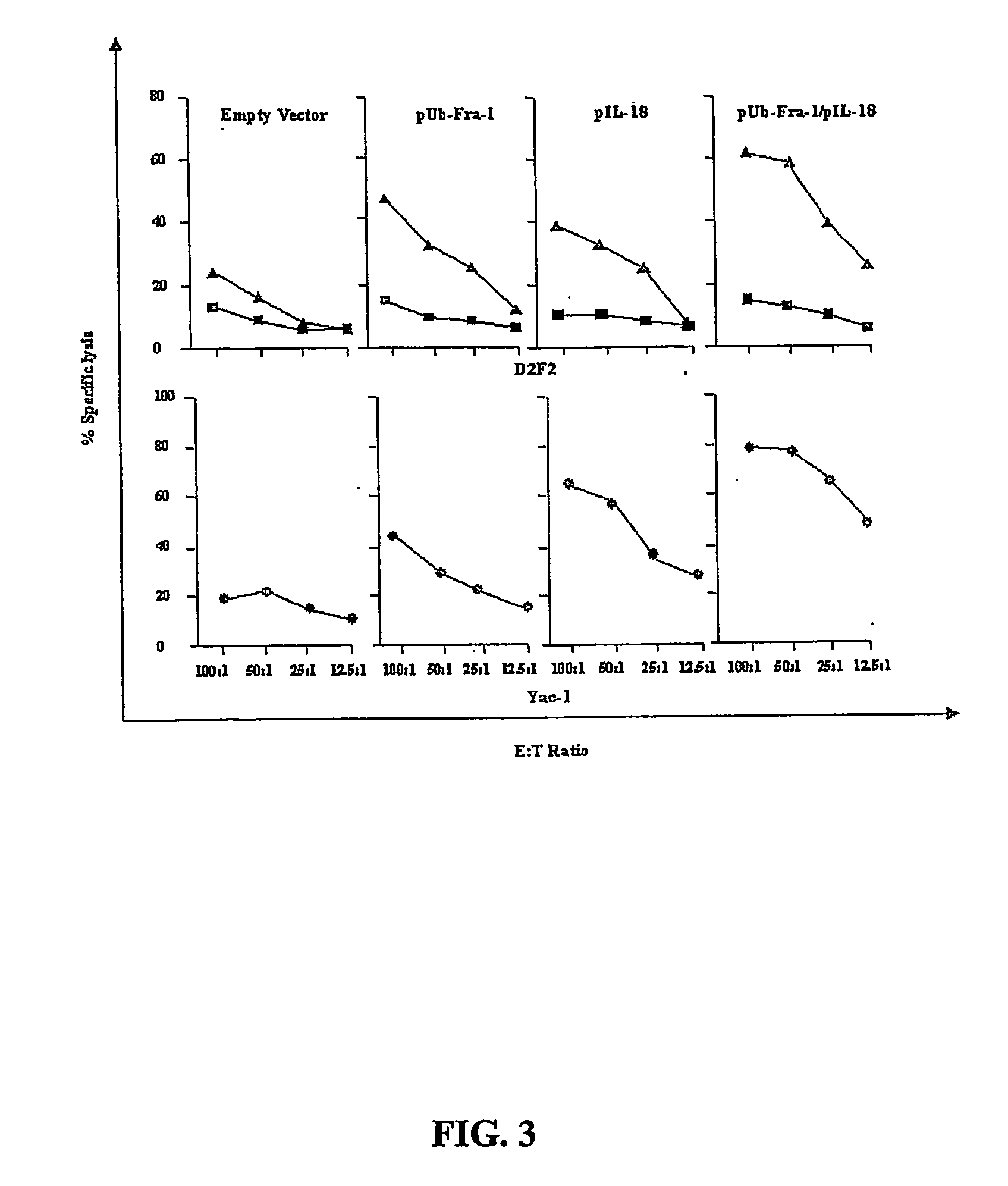Dna vaccines against tumor growth and methods of use thereof
a technology of tumor growth and dna vaccine, which is applied in the field of dna vaccines, can solve the problems of inactivation and not all infectious agents can be readily cultured, and achieve the effect of long-term protection against developing
- Summary
- Abstract
- Description
- Claims
- Application Information
AI Technical Summary
Benefits of technology
Problems solved by technology
Method used
Image
Examples
example 1
Construction of Expression Vectors
[0094] Two constructs were made based on the pIRES vector (Invitrogen). The first, pUb-Fra-1, encoded polyubiquitinated, full-length murine Fos-related antigen-1 (Fra-1). The second, pIL-18, encoded murine Interleukin-18 (IL-18). The empty vectors with or without a polyubiquitin sequence, served as controls. Protein expression of Fra-1 and IL-18 was demonstrated by Western blotting. IL-18 protein expression was found in both cell lysates and culture supernatants. The bioactivity of murine IL-18 in the cell supernatants was measured by an ELISA assay (RD systems, Minneapolis Minn.) using the production of IFN-γ in KG-1 lymphoma cells as an indicator, as described by Kawashima, et al., 2001, Arthritis Rheum., 44: 550-560. The pUb-Fra-1 construct included the murine Fra-1 DNA sequence shown in FIG. 11 (SEQ ID NO: 3) and four repeats of the ubiquitin DNA sequence shown in FIG. 14 (SEQ ID NO: 9). The pIL-18 construct included the murine IL-18 DNA sequen...
example 2
Transduction and Expression of S. typhimurium with DNA Vaccine Plasmids
[0095] Attenuated Salmonella typhimurium (aroA− dam−) were transduced with DNA vaccine plasmids by electroporation. Briefly, a single colony of bacteria was inoculated into about 3 ml of Luria-Bertani (LB) medium, and then harvested during mid-log phase growth and washed twice with ice-cold water. Freshly prepared bacteria (about 1×108) were then mixed with plasmid DNA (about 2 μg) on ice in a 0.2 cm cuvette and electroporated at about 2.5 KV, 25 μF, and 200 Ω. The bacteria were transformed with the following plasmids: empty vector, pUb, pUb-Fra-1, pIL-18 or both pUb-Fra-1 and pIL-18 together, indicated as pUb-Fra-1 / pIL-18. After electroporation, the bacteria were immediately removed from the cuvette and placed into a sterile culture tube containing about 1 ml of LB broth medium and incubated with moderate shaking for about 30 minutes at about 37° C. The bacteria were centrifuged and then plated onto LB plates w...
example 3
Detection of EGFP Expression
[0096] Enhanced green fluorescent protein (EGFP) expression by aroA− dam− S. typhimurium was used to obtain direct evidence for DNA transfer from the bacterial carrier to Peyer's Patches and to establish that protein expression took place efficiently and successfully. EGFP expression was tested using the doubly attenuated strain S. typhimurium harboring the gene (S.T-GFP). Mice were administered about 1×108 bacteria by oral gavage, and about 24 hours thereafter, these animals were sacrificed and biopsies collected from the small intestine washed thoroughly with phosphate buffered saline (PBS). The fresh specimens were checked for EGFP expression in Peyer's Patches by confocal microscopy or saved for further hematoxylin and eosin (H&E) staining. The results are shown in FIG. 1D.
PUM
| Property | Measurement | Unit |
|---|---|---|
| Nucleic acid sequence | aaaaa | aaaaa |
| Immunogenicity | aaaaa | aaaaa |
Abstract
Description
Claims
Application Information
 Login to View More
Login to View More - R&D
- Intellectual Property
- Life Sciences
- Materials
- Tech Scout
- Unparalleled Data Quality
- Higher Quality Content
- 60% Fewer Hallucinations
Browse by: Latest US Patents, China's latest patents, Technical Efficacy Thesaurus, Application Domain, Technology Topic, Popular Technical Reports.
© 2025 PatSnap. All rights reserved.Legal|Privacy policy|Modern Slavery Act Transparency Statement|Sitemap|About US| Contact US: help@patsnap.com



